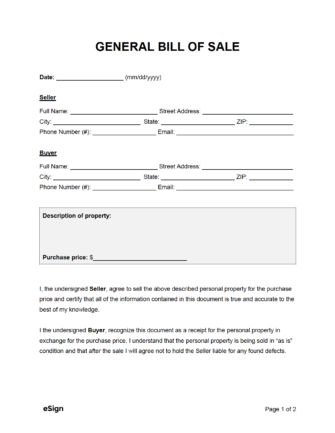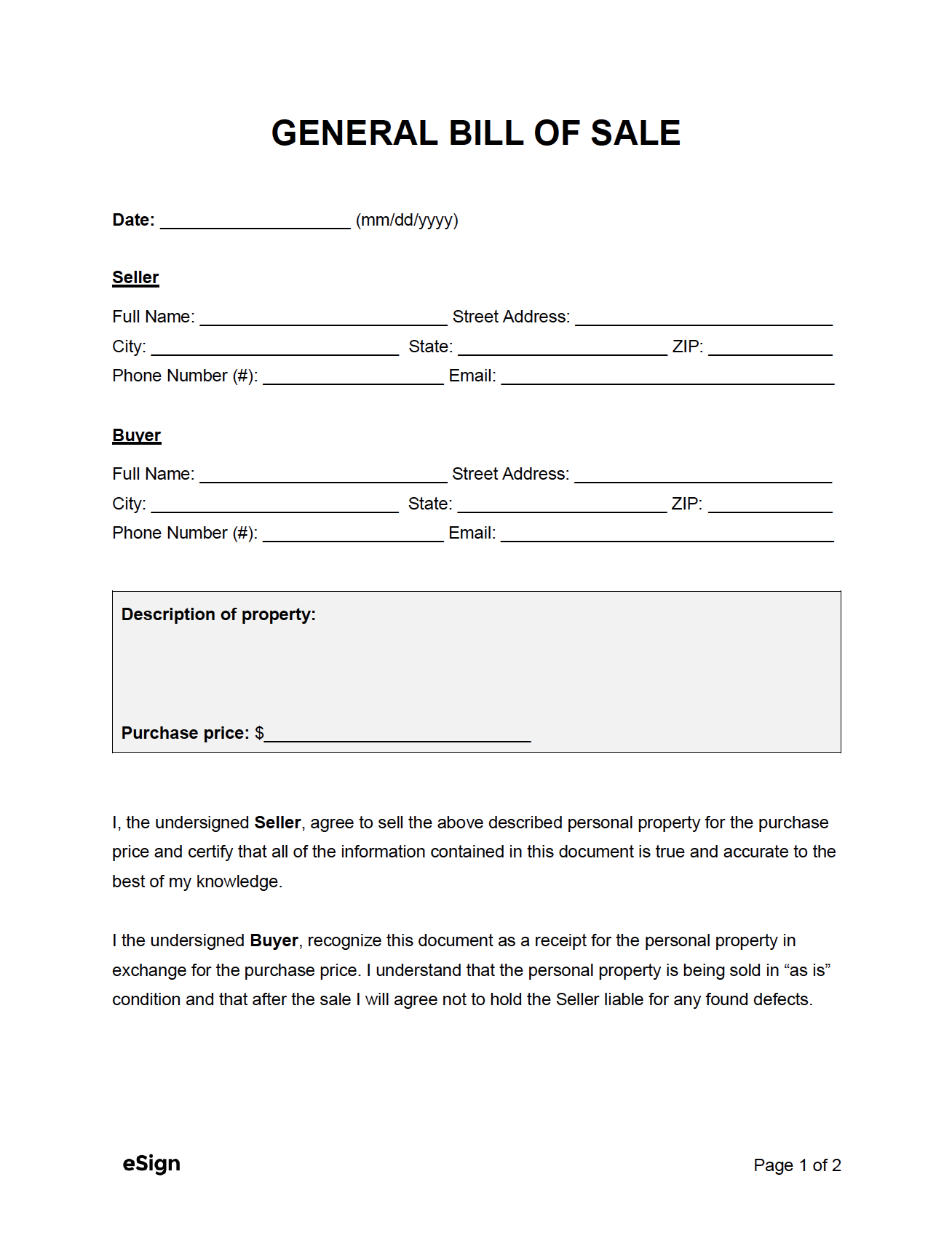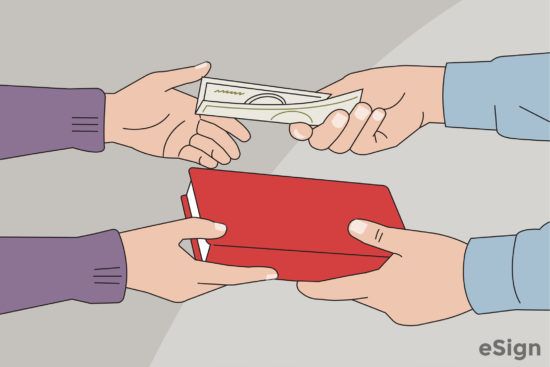By State
- Alabama
- Alaska
- Arizona
- Arkansas
- California
- Colorado
- Connecticut
- Delaware
- Florida
- Georgia
- Hawaii
- Idaho
- Illinois
- Indiana
- Iowa
- Kansas
- Kentucky
- Louisiana
- Maine
- Maryland
- Massachusetts
- Michigan
- Minnesota
- Mississippi
- Missouri
- Montana
- Nebraska
- Nevada
- New Hampshire
- New Jersey
- New Mexico
- New York
- North Carolina
- North Dakota
- Ohio
- Oklahoma
- Oregon
- Pennsylvania
- Rhode Island
- South Carolina
- South Dakota
- Tennessee
- Texas
- Utah
- Vermont
- Virginia
- Washington
- West Virginia
- Wisconsin
- Wyoming
Commonly Used For
A generic bill of sale can be used for any type of personal property, including:
- Yard sale items
- Electronics
- Clothing
- Furniture
- Kitchenware and appliances
- Garden tools
- Books
- Video games
- Sports gear
- Handmade gifts
Sample
Download: PDF, Word (.docx), OpenDocument
GENERAL BILL OF SALE
Date: [MM/DD/YYYY]
Seller Name: [SELLER FULL NAME] Address: [SELLER ADDRESS]
Phone Number (#): [SELLER PHONE NUMBER] Email: [SELLER EMAIL ADDRESS]
Buyer Name: [BUYER FULL NAME] Address: [BUYER ADDRESS]
Phone Number (#): [BUYER PHONE NUMBER] Email: [BUYER EMAIL ADDRESS]
Personal Property: [DESCRIPTION OF PERSONAL PROPERTY BEING SOLD]
Purchase Price: $[SELLING PRICE]
I, the undersigned Seller, agree to sell the above-described personal property for the purchase price and certify that all of the information in this document is true and accurate to the best of my knowledge.
I, the undersigned Buyer, recognize this document as a receipt for the personal property in exchange for the purchase price. I understand that the personal property is being sold in “as is” condition and that after the sale, I agree not to hold the Seller liable for any defects found.
Buyer’s Signature: ____________________ Date: [SIGNING DATE]
Printed Name: [BUYER NAME]
Seller’s Signature: ____________________ Date: [SIGNING DATE]
Printed Name: [SELLER NAME]


